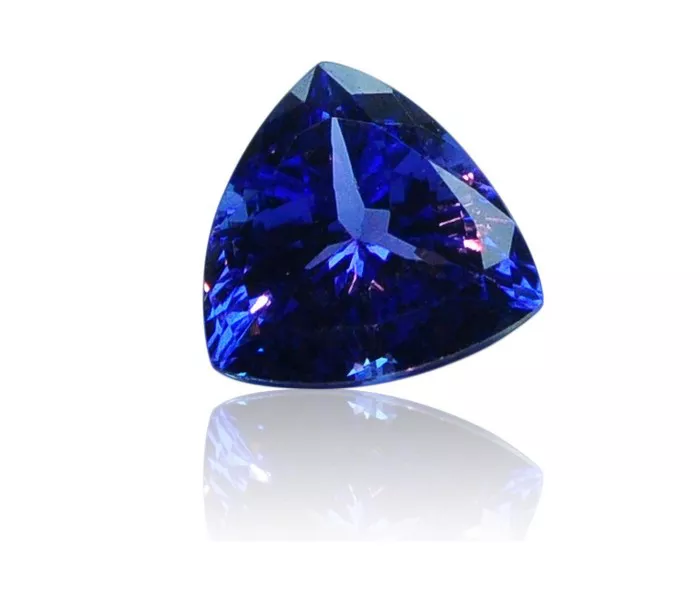When it comes to the world of gemstones, tanzanite and amethyst are both renowned for their captivating beauty and rich color. While tanzanite is celebrated for its mesmerizing blue-violet hues, amethyst enchants with its regal purple tones. But when it comes to value, which gemstone holds a higher position? In this article, we explore the factors that contribute to the value of tanzanite and amethyst, including rarity, color intensity, clarity, size, durability, and market demand.
RARITY
Rarity is one of the primary factors that determine the value of a gemstone. In terms of rarity, tanzanite holds a significant advantage over amethyst. Tanzanite is found in only one location on Earth—the Merelani Hills of Northern Tanzania—while amethyst has a broader global distribution. This exclusivity makes tanzanite considerably rarer than amethyst, thus contributing to its higher value in the market.
COLOR INTENSITY
Both tanzanite and amethyst are sought after for their distinctive colors, but the intensity and uniqueness of these colors vary between the two gemstones. Tanzanite’s blue-violet hue, especially in vivid and saturated shades, is highly prized by collectors and enthusiasts. The rare combination of blue and violet tones sets tanzanite apart from other gemstones, making it exceptionally valuable.
On the other hand, amethyst is known for its regal purple color, ranging from light lavender to deep royal purple. While intense and evenly distributed color is desirable in amethyst, different shades and saturation levels can still be found within the market. Consequently, the value of amethyst varies depending on the depth and richness of its purple hue.
CLARITY
Clarity refers to the absence of internal flaws or inclusions within a gemstone. Both tanzanite and amethyst can exhibit varying degrees of clarity, with high-quality stones being more valuable. Tanzanite often possesses some natural inclusions, but eye-clean specimens with minimal flaws command a higher price tag.
Amethyst, on the other hand, tends to have excellent transparency with fewer inclusions. It is relatively easier to find high-quality, eye-clean amethyst stones in the market. However, rare amethyst varieties, such as those displaying asterism (star effect) or color zoning, may possess higher value due to their unique optical phenomena.
SIZE
Size plays a crucial role in determining the value of gemstones. Generally, larger gemstones are rarer and thus more valuable. In terms of size, amethyst has an advantage over tanzanite. Amethyst crystals are commonly found in larger sizes, allowing for the creation of substantial faceted gemstones suitable for statement jewelry pieces.
Tanzanite, on the other hand, typically occurs in smaller sizes relative to amethyst. Larger tanzanite gemstones, especially those exhibiting exceptional color and clarity, become considerably scarce and command higher prices per carat.
DURABILITY
Durability is an important consideration when evaluating the value of gemstones. Tanzanite has a moderate hardness on the Mohs scale, making it suitable for everyday wear. However, its susceptibility to scratches and impact damage means that proper care must be taken to preserve its beauty.
Amethyst, on the other hand, ranks higher on the Mohs scale with a hardness of 7. This makes it more resistant to scratching and wear, making it a durable choice for various types of jewelry. Its robust nature contributes to its long-lasting value.
MARKET DEMAND
Market demand significantly influences the value of gemstones. Tanzanite’s popularity has been on the rise since its discovery in the 1960s. Its rarity, unique color, and captivating beauty have contributed to its status as a highly sought-after gemstone in the market. The demand for tanzanite remains strong, particularly among collectors, jewelry enthusiasts, and individuals seeking a distinct and valuable gemstone.
Amethyst, being more readily available than tanzanite, has a wider market presence. Its vibrant purple color appeals to a broad range of consumers, from those seeking affordable jewelry options to collectors appreciating its natural charm. While amethyst may be more accessible, exceptional quality stones with intense color and clarity can still fetch high prices in the market.
CONCLUSION
In conclusion, both tanzanite and amethyst possess unique qualities that contribute to their individual value. Tanzanite’s rarity, mesmerizing blue-violet color, and increasing market demand make it an exclusive and highly valuable gemstone. Amethyst, with its regal purple hues, wider availability, and versatility, also holds significant value in the market.
Ultimately, the value of a gemstone is subjective and can vary depending on personal preferences, market trends, and individual perception of beauty. While tanzanite is considered rarer and may command higher prices due to its limited geographic occurrence, intense color, and exclusivity, amethyst’s affordability, wide range of colors, and larger size availability make it a popular choice for jewelry enthusiasts.
In the end, the decision between tanzanite and amethyst should be based on personal preferences, style preferences, and budgetary considerations. Whether you are drawn to the alluring blue-violet hues of tanzanite or the regal purple shades of amethyst, both gemstones offer a touch of elegance and beauty to any jewelry collection.


